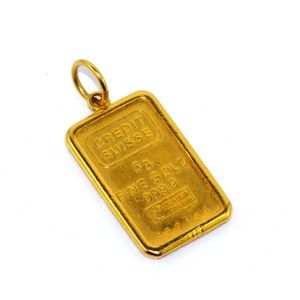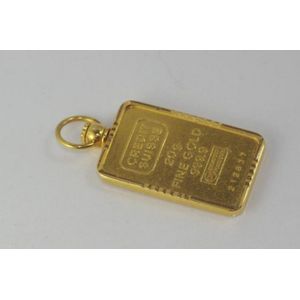Edwardian 9ct Gold Vesta Case with Military Engraving
An Edwardian 9 carat gold vesta case, 1902 Chester, gold standard .375, maker's mark for William Neale, a rectangular cushion profile vesta and strike of typical hinged form, with bail and hoop, engraved W.J.R from R.H 4th Hussars 1896-1906, twice hallmarked, boxed, gold weight 20gr, length 5 cm, width 4 cm
You must be a subscriber, and be logged in to view price and dealer details.
Subscribe Now to view actual auction price for this item
When you subscribe, you have the option of setting the currency in which to display prices to $Au, $US, $NZ or Stg.
This item has been sold, and the description, image and price are for reference purposes only.
- Carat - A carat (abbreviated "ct") is a unit of measurement used to describe the weight of a diamond or other gemstone, and separately is a unit of measurement used to describe the weight of precious metals such as gold,.
For gemstones, one carat is equal to 0.2 grams or 200 milligrams. The weight of a diamond is one of the Four Cs (along with cut, colour, and clarity) that are used to determine a diamond's value.
It is important to note that a diamond's weight does not necessarily correspond to its size. A diamond's cut, which affects how well it reflects light, can make a diamond of a lower weight appear larger than a diamond of a higher weight. Additionally, the carat is not the only factor to determine the value of a diamond, other factors such as clarity, colour and cut are important too.
In the gold industry, the purity of gold is measured in carats (abbreviated "ct"), with 24 karats being pure gold and lower carat numbers indicating a lower purity level. So, for example, 18 carat gold is 18/24 or 75% pure gold, and 12 carat gold is 12/24 or 50% pure gold. - Edwardian - The Edwardian period of English furniture and decorative arts design is named for Edward VII (1841 ? 1910) who was King of the United Kingdom and the British Dominions and Emperor of India for the brief period from 1901 until his death in 1910. It follows the Victorian period, in turn was followed by the Art Nouveau and Art Deco styles. In Australia, designs of this period are also known as being in the Federation style.
This item has been included into following indexes:
Visually similar items

Two sterling silver vinaigrettes, Birmingham 1853 and Birmingham 1823
Sold by
in
for
You can display prices in $Au, $US, $NZ or Stg.

Credit Suisse 5g fine gold pendant, in a 9ct gold frame, total eight 6.6gms.
Sold by
in
for
You can display prices in $Au, $US, $NZ or Stg.

14ct gold square diamond pendant with 16 square cut diamonds, 1.7 grams approx.,
Sold by
in
for
You can display prices in $Au, $US, $NZ or Stg.

Gold pendant marked 20g 999.9 gold, with gold surround, total weight: 24.2 grams
Sold by
in
for
You can display prices in $Au, $US, $NZ or Stg.
